Not only do they heat up, but they also decorate the room! Features and installation of tubular heating radiators
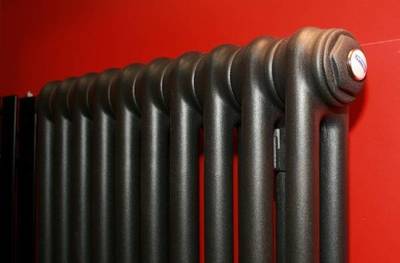
Steel tubular radiators are a type of heating batteries, used in liquid heating systems.
The function of heating radiators is to heat the rooms in which they are installed.
Steel tubular batteries as a separate class of heating equipment are relatively new, however have a number of undeniable advantages compared to traditional analogues.
Construction of tubular heating radiators
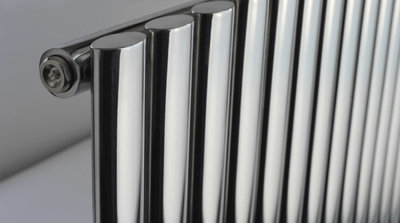
The appearance of tubular radiators is generally not much different from traditional heating system batteries, but at the same time they are more graceful and thinner.
One of the main differences is that tubular batteries are not monolithic, they consist of individual elements, pre-welded into a single unit.
Tubular radiator design includes the following elements:
- Upper manifold.
- Lower collector.
- Steel tubes, connecting the collectors to each other.
- Fittings for connection to the heating system.
Depending on the specific model, one section may contain from 2 to 6 tubes. In turn, number of sections fluctuates within the limit from 2 to 60. As the number of tubes increases, the depth of the radiator itself increases, which allows its width to be reduced while maintaining optimal heat transfer rates. This factor is important for small rooms or rooms that do not allow the use of a radiator of the required width.
Reference. Wide range of models available for sale allows you to make the best choice taking into account the characteristics and features of the premises that need to be heated.
Elements of tubular batteries are made of steel, primarily due to the high strength, plasticity, weldability, and resistance of this alloy to corrosion processes. Individual elements are connected by laser welding, which ensures minimal thickness of welded seams with high strength and reliability of the finished structure.
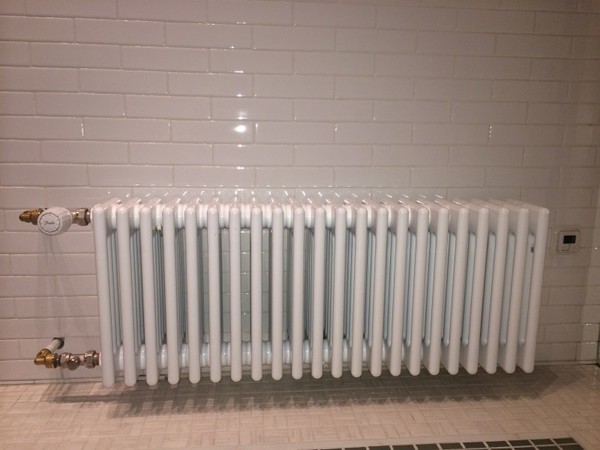
Photo 1. Tubular vertical radiator. Made of steel, has a large number of tubes.
Main Features
In addition to the design features, This type of heating equipment is also characterized by:
- Connection variability. Due to the presence of a pair of side and a pair of bottom fittings, the devices are connected to the heating system either from the side or from the bottom.
- Variability of installation. A number of models are equipped with legs, which allows you to place the batteries on the floor without attaching them to the wall.
- Reduced hydraulic resistance ensures good throughput during operation.
Technical specifications
Depending on the specific model, the main technical characteristics of the described units vary within the following limits:
- Height — from 150 to 3 thousand mm.
- Width — from 200 to 2 thousand mm.
- Depth — from 50 to 300 mm.
- Wall thickness — from 1.2 to 2 mm.
- Working pressure — up to 10 atm.
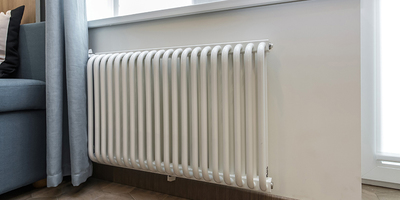
And also from model to model they differ:
- Number of sectionsThe width of the radiator directly depends on this parameter.
- Number of tubes in a section. Affects battery depth.
- Cross-section of tubesAmong the models available on the market, the most common batteries are those with round, rectangular and oval cross-sections of the main design elements.
Important! Section of battery tubes has virtually no effect on its heat transfer performance and has a decorative rather than practical function. The efficiency of operation depends primarily on the diameter of the tubes and their number in the section.
Advantages and disadvantages
Among the indisputable advantages steel tubular batteries are distinguished by:
- Ease of installation, opportunity self-installation.
- Uniform heating.
- Safety of use And long term of effective operation.
- In most models there are no sharp corners, which significantly minimizes the likelihood of injury (especially to small children).
- Easy to maintain and care for.
- Diversity of model range allows you to choose a radiator that matches the interior of the heated room.
Main flaws:
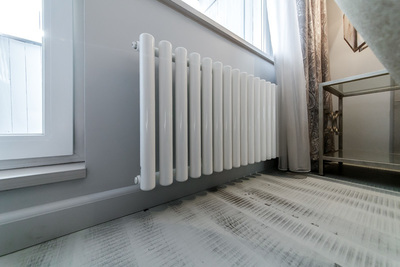
- Low heat transfer rates. Moreover, this drawback is primarily inherent in the cheapest models with a minimum number of tubes in a section.
- High cost compared to traditional radiators.
- Risk of breakthrough at welding points under strong pressure difference.
The above mentioned factor is largely limits the range of effective and safe use similar devices.
Sharp pressure drops are predominantly characteristic of centralized heating systems in apartment buildings, which is why experts recommend installing tubular radiators only in private homes equipped with autonomous heating systems.
Attention! The period of effective and safe use of tubular radiators depends on quality of the installed equipment, and also compliance with recommendations, given in the operating instructions.
Non-standard execution
Some manufacturers, in addition to finished products, steel tubular radiators they also make to order, depending on the customer's wishes regarding both the appearance and technical characteristics of the equipment. In addition, there are also tubular radiators various design series, combining the functions of a heating unit and a piece of furniture - heating devices are built into benches, bar counters and other furniture.
Vertical and horizontal models
Depending on the location of the tubes and dimensions, tubular radiators are divided into vertical and horizontal models.

Photo 2. Tubular radiator of horizontal type. Has a fairly modern design, fits well with the interior.
For vertical models characteristic height 1-3 m with a small width. In the overwhelming majority of units, the tubes are also located vertically. More often used in conditions of space shortage - on stairwells, next to balcony doors, and also in rooms with stained glass windows.
Horizontal analogues are distinguished by their small height and increased width compared to vertical models. Depending on the design of a particular model, the tubes are located horizontally or vertically. Horizontal models cheaper compared to vertical analogues, and also easier to connect to the heating system in a lateral manner.
Installation
The installation of steel tubular batteries is in many ways similar to the installation of traditional models and is not very complex subject to theoretical knowledge and practical skills.
List of tools required for work:
- screwdriver;
- impact drill or hammer drill;
- adjustable wrench;
- pliers;
- roulette;
- building level;
- pencil.
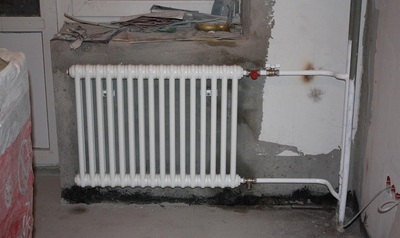
Installation stages:
- Removing the old battery.
- Marking and installation of mounting brackets. Steel tubular radiators are heavy, so it is necessary to use brackets with the appropriate load capacity.
- Attaching a tubular radiator and assembling the mounting kit.
- Installation of a shut-off valve, a valve for a thermal head and a Mayevsky valve.
- Connection to heating system pipes.
- Pressure testing.
Connection method
Most models are connected to the heating system bottom or side methodThe choice of connection method is influenced by the characteristics and features of a specific model, as well as the features of the heating pipe layout in the premises.
Bottom connection method consists in the fact that both the supply and return pipes are connected to the radiator from below. With side connection The supply and return pipes are connected to the left or right side of the battery, depending on the model.
Conditions for correct installation
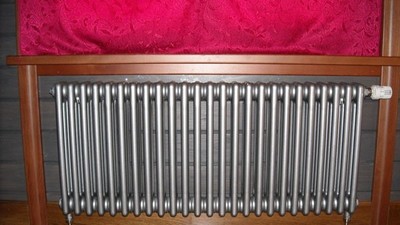
Regardless of the characteristics of the radiator, for its efficient operation During installation it is important to ensure the following conditions:
- Distance between the top edge and the window sill (for horizontal models): 5-10 cm.
- Distance between bottom edge and floor: 9-12 cm.
- Distance between wall and radiator: 2-5 cmIn case of installation of a reflective heat-insulating layer, longer mounting brackets will be required.
Useful video
Watch the video, which talks about the features of tubular radiators for a house or apartment.
Heating device and furnishings
Use of tubular steel radiators - an effective and safe way to heat individual rooms and small buildings. The variety of shapes and the ability to paint in the desired color allow such devices to fit into any existing interior. In addition, the design features of tubular radiators make them ideal for use in homes with small children.







Comments